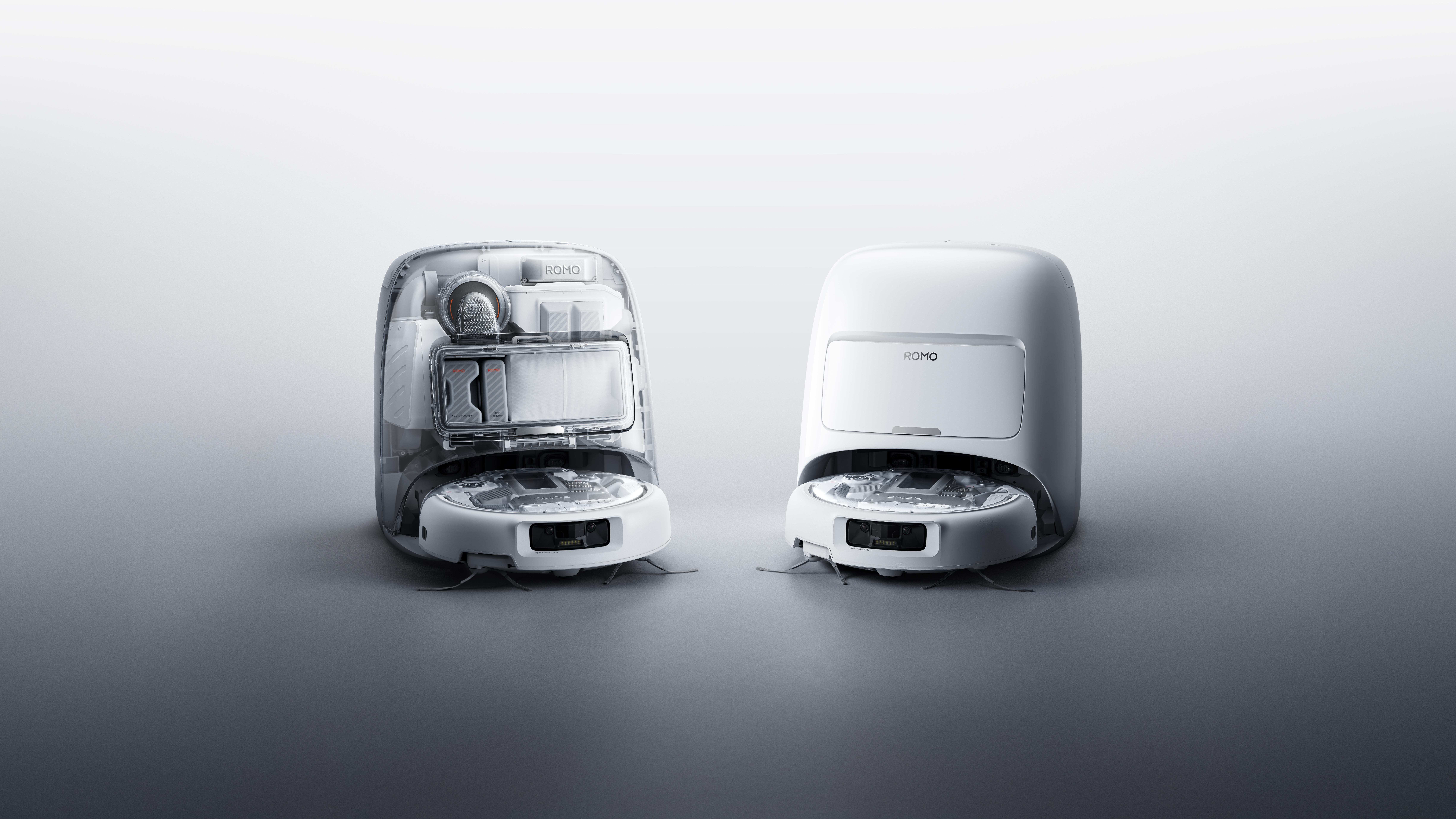DJI, known for its leading drones and camera stabilization technology, is entering the highly competitive robot vacuum and mop market with the DJI ROMO series. The ROMO aims to differentiate itself by leveraging DJI’s established expertise in robust obstacle detection/avoidance and precision navigation, translating drone-grade sensing technology to the home cleaning experience.
The ROMO features several notable technologies that position it in the high-end segment:
- Drone-Derived Sensing & Precision Navigation: The ROMO uses an advanced obstacle sensing system featuring dual fisheye vision sensors and multiple wide-angle solid-state LiDAR sensors. This technology, adapted from DJI’s drones, achieves millimeter-level detection, allowing the vacuum to identify and navigate around objects as small as 2mm (like charging cables or thin toys) – a huge step up from other vision sensing systems. Furthermore, when the vision sensors detect concentrated debris (like pet litter), the ROMO automatically decreases its speed and side brush rotation to prevent scattering while boosting suction.
- Dual Anti-Tangle Roller Brushes: To address one of the biggest pain points in robotic cleaning, the ROMO series includes a powerful Dual Anti-Tangle Roller Brush system. This system is driven by twin high-torque motors, designed to sweep debris into a hollow center, ensuring effortless pickup of long hair and efficient cleaning performance.
- Adaptive Edge and Corner Cleaning: Guided by real-time mapping, the ROMO features dual flexible arms that automatically extend and retract. This unique mechanism allows the device to reach deep into corners and along edges of walls and furniture legs—areas that are typically tough for robotic vacuums & mops to reach.
- Flagship Power and Quiet Operation: The system delivers up to 25,000 Pascals of powerful suction, capable of sweeping and collecting long hair, dust, and large debris. It also incorporates a 3-Stage Sound Suppression System, resulting in a quiet operating noise level of approximately 56 dBA during the combined Vacuum & Mop mode.
- Hassle-Free Self-Cleaning Station: The base station is designed to provide up to 200 days of maintenance-free operation. It uses four high-pressure water jets and strong downward force (12 newtons) to thoroughly clean the mop pads after each run, eliminating odors. The station also supports 55W fast charging, replenishing the battery in approximately 2.5 hours.
- Remote Home Check-ins: Owners can use its onboard cameras to check in on their home and speakers/microphone to talk with family or interact with pets. The video data is encrypted for transmission and the cameras can be disabled when not in use.
Models and Availability
The ROMO series launches in Europe today with a phased rollout, consisting of three primary models. All three models feature the core technology: 25,000 Pa suction, drone-derived sensing, dual extendable arms, and the self-cleaning base station. The differences primarily relate to aesthetics and premium cleaning options:
- ROMO S (Standard): Retailing at €1,299. This is the entry-level model, featuring an opaque white design.
- ROMO A (Advanced): Retailing at €1,599. This mid-range model features a transparent top panel on the robot body, offering a view of the internal components.
- ROMO P (Performance/Flagship): Retailing at €1,899. This top-tier model features a fully transparent design for both the robot and the base station, and includes an extra compartment for dispensing targeted cleaning solutions (like deodorizer or antibacterial agents) directly onto the mop pads.
No specific timing or pricing has been provided yet for the US market.
Check out DJI’s marketing video here:



